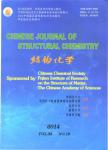Precisely Composition Controlled Synthesis of Cu0.5Ni0.5 Alloy with Optimum Catalytic Activity
Precisely Composition Controlled Synthesis of Cu_(0.5)Ni_(0.5) Alloy with Optimum Catalytic Activity作者机构:State Key Laboratory of Inorganic Synthesis and Preparative ChemistryCollege of Chemistry Jilin University
出 版 物:《Chinese Journal of Structural Chemistry》 (结构化学(英文))
年 卷 期:2017年第36卷第12期
页 面:2033-2043页
核心收录:
学科分类:081705[工学-工业催化] 08[工学] 0817[工学-化学工程与技术] 0703[理学-化学]
基 金:financially supported by NNSFC(No.21025104 and 21271171)
主 题:catalytic reduction CuNi bimetallic alloy p-nitrophenol NaBH4
摘 要:Alloys based on non-noble metals could be the next generation of high-performance catalysts for many chemical reactions. However, precisely composition controlled synthesis of non-noble alloys remains a significant challenge. In this work, we report a simple synthesis of Cu_(0.5)Ni_(0.5) alloys without any component segregation. Its success relies on the use of Cu–Ni oxalate precursors, which are chelated in the proximity by oxalate ligands. One of the attractive features for the oxalate routes of catalyst preparation is that no classical support material is needed. The actual component ratios of the obtained Cu_(0.5)Ni_(0.5) alloy are consistent with the initial ratio. Cu_(0.5)Ni_(0.5) alloy shows a higher catalytic activity than pure Cu and Ni catalysts in the reduction of p-nitrophenol(4-NP) to p-aminophenol(4-AP) by sodium borohydride(NaBH4) in an aqueous solution, and the performance depends strongly on the strong interaction between Cu and Ni. The findings reported here are highly helpful to understand the relationship between the synergistic effects in alloys and their catalytic performance, and therefore could provide appropriate strategies to obtain desirable catalysts with improved activity in various catalytic applications.



